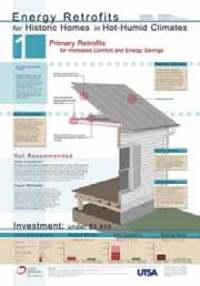Analyzing Energy Saving Retrofit Potential of Historic Homes in Hot-humid Climates

This paper reports on and identifies lessons learned from an interdisciplinary project that aimed to identify possible retrofit packages for historic homes in San Antonio, TX. The project, which involved researchers from architecture, mechanical engineering, and real estate finance, aimed to identify cost effective retrofit packages that owners of historic homes can implement to reduce energy use, while maintaining the cultural identity of the homes. The project included the analysis of four case study historic homes constructed in the early twentieth century. Initial results indicate that cost-effective improvements would include installation of a radiant barrier, attic and crawl space insulation, and overall reductions to air infiltration.
The project aimed to identify practical and economical retrofit measures and design solutions that are based on measurable data and that can assist contractors and homeowners of historic homes in improving the energy efficiency of their homes in a manner that does not affect the historical and cultural value those homes represent.
keywords: Historic Homes; Energy Efficiency; Residential Retrofits


Add comment
Log in to post comments